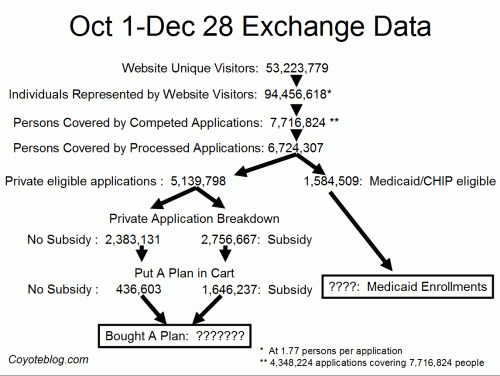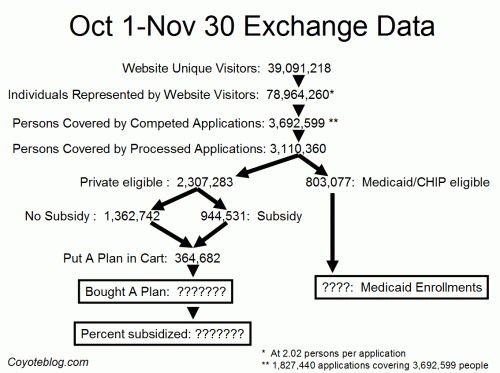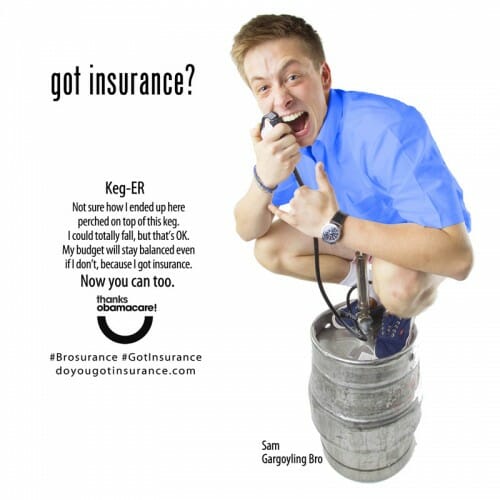Unreported Obamacare Data -- Exchange Sales Conversion Is Much Worse When The Taxpayer is Not Subsidizing the Policy
I like digging through the raw data in the Obamacare report rather than just accepting the bits the New York Times wants to report. As a business guy, I was looking at the data from a sales-conversion perspective -- ie, who is buying and who is not? And of course, why?
When I was in the marketing world, we used to call the process of sales conversion the sales funnel. For the exchanges this means some percentage of the available market actually show up at the exchange, and then some percentage of those actually complete the arduous sign-up process, and some percentage of those actually select a policy, and presumably some percentage of those actually pay, though we don't know what that latter percentage is. At each step, we ask ourselves what people are we converting from one step to the next, and why.
Here is the Obamacare exchange sales funnel through December (as has become tradition, it is a scavenger hunt to fill this in and the data locations move around from month to month).
As you can see, of the nearly 3.7 million people who have selected a private plan or been put in Medicaid or CHIP, fully 88% are on the government dole (subsidized or full Medicare).
The interesting new data is on the plan selection breakdown between subsidized and un-subsidized. This leads to an interesting finding that is a bit non-obvious from the report itself because the data is spread all over the report. But lets look at conversion of applicants to plan selection based on whether folks are subsidized or subsidized.
For the 2,383,131 applicants who find they are no going to be subsidized, only 436,603 have selected a plan, for a 18% conversion rate
For the 2,756,667 applicants who find they will get supported by the taxpayer, 1,646,237 selected a plan, far a 60% conversion rate.
In essence, applicants are more than 3 times more likely to sign up if they are getting taxpayer money. The exchanges are not selling health care, they are selling subsidies. People sign up, check to see if they have money coming, and go away if they don't and stay if they do.
The next really interesting piece of data would be the demographics and health status of the 18% who did sign up for an unsubsidized plan. I would not be at all surprised if the demographics there were far, far worse than the average. Emerging hypothesis: People come to the exchange, and sign up if they get a subsidy, or if they have health problems or high risk.





